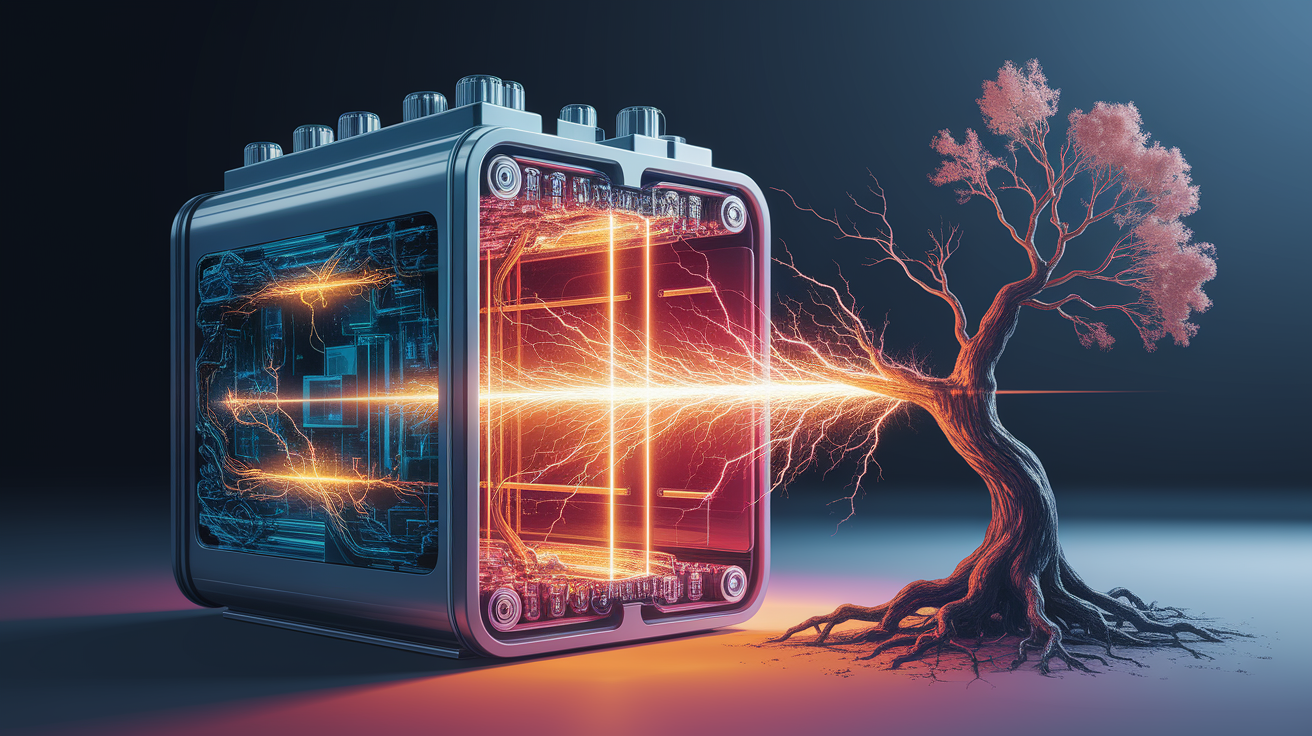Quick Answer: Batteries lose capacity over time mainly because their internal chemistry and physical structure change during use and storage. These changes make it harder for them to store and deliver energy efficiently, leading to reduced performance.
Spark of Truth: Why Batteries Lose Capacity Over Time
Think of a battery like a pantry for electricity. Over time, the shelves get worn, some items spill, and a bit of clutter builds up—making it harder to store and retrieve energy. This gradual decline in battery capacity and performance, known as battery degradation, happens in both your smartphone and electric car due to repeated charge and discharge cycles, chemical side reactions, and environmental stressors.

Two main processes drive this aging: changes in its chemical makeup and physical wear of its internal components. Together, they limit the battery’s ability to hold a charge, deliver power, and stay healthy over its lifespan.
Inside the Cell: Key Chemical Degradation Processes
Within a lithium-ion battery, a range of chemical reactions gradually chip away at its efficiency. These reactions occur at both the anode (negative side) and cathode (positive side) and involve electrolyte breakdown.

- Solid Electrolyte Interphase (SEI) growth: Forms on the anode and consumes some lithium and electrolyte, increasing internal resistance.
- Cathode Electrolyte Interphase (CEI) formation: Builds up on the cathode, slowing down ion transport.
- Lithium plating: Occurs when charging is too rapid or at low temperatures, leading to ‘dead lithium’ that is unusable for energy storage.
- Electrolyte decomposition: Generates byproducts that interfere with normal current flow.
- Transition-metal dissolution: Alters the cathode material and impacts long-term stability.
As explained in side-reaction studies, these processes often work together, contributing to capacity fade and power fade, the two common indicators of battery aging.
Material Fatigue: Physical Wear and Structural Changes
Chemistry is only half of the story—physical wear plays a big role, too. Inside a battery, electrode materials expand and contract with each charge cycle, much like a sponge swelling and shrinking in water. Over time, this repeated movement causes cracks, breaks, and the loss of active material.

- Particle cracking: Breaks up the electrode material, making it harder to move ions efficiently.
- Layer delamination: Reduces contact between materials needed for energy storage.
- Electrode slippage: Causes misalignment and diminished activity.
According to structural degradation studies, these physical changes go hand-in-hand with chemical wear, compounding the impact on battery health.
External Stress: Why Your Habits and Environment Matter
Your charging and usage habits—plus the conditions your device is exposed to—make a big difference in how quickly a battery ages.

- Temperature extremes: High heat accelerates unwanted chemical reactions, while low temperatures encourage lithium plating. (thermal stress research)
- Fast charging: Raises battery temperature and stresses electrode materials.
- Keeping battery at extremes of charge: High or low state-of-charge (SOC) causes extra wear compared to mid-range levels.
- Physical shocks: Vibration or impact can disturb electrode alignment.
- Moisture exposure: Can trigger corrosive reactions within non-aqueous electrolytes.
Studies on environmental impacts show that these external factors can interact with internal chemical processes, creating complex feedback loops that make battery life prediction challenging.
What You See: Linking Internal Degradation to Performance Loss
To the user, battery degradation shows up as familiar annoyances: faster battery drain, slower performance, or difficulty holding a charge. Scientists categorize degradation into three levels:

- Mechanisms: The chemical and physical processes inside the cell.
- Modes: Observable changes, such as loss of lithium inventory or active material.
- Effects: Operational problems like capacity fade (less total energy available) and power fade (reduced instant power output).
Advanced diagnostics, such as degradation mode analysis, help engineers distinguish between these root causes to develop targeted solutions.
Power Forward: Final Thoughts on Battery Aging
Batteries are complex systems where chemistry, materials, and environment all play roles in their aging process. While some decline is inevitable, knowing the factors behind capacity loss can help you make smarter choices—like avoiding extreme temperatures, fast charging only when needed, and keeping your device’s charge near the middle of its range whenever possible.
By understanding the science and the impacts of habits, we’re better equipped to extend battery lifespan, improve energy efficiency, and keep our devices running smoothly for longer.













